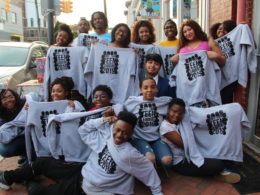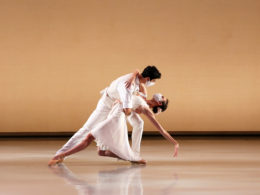In January 2019, following a national search, the public broadcasting entity of Central Virginia – known familiarly at the time as The Community Idea Stations – tapped a new leader. Jayme Swain, a veteran journalist who had ascended to the No. 3 post at PBS in Washington, assumed the reins of the dual PBS and NPR member station with a mandate to enhance the impact of the stations, paradoxically at a time when many public broadcasting stations around the country were going through a period of retrenchment.
No stranger to Virginia, the University of Virginia graduate regularly escaped her D.C. confines to her fixer-upper in Madison County where, coincidentally, she and her British-born husband were members of the very family of stations she eventually would be called on to lead.

In between shooting some fundraising promos and interviewing for an opening on the news team, Jayme found time to chat with The Phil about her transition to VPM and what has changed in those two years.
It’s been a busy two years for you to say the least. How has VPM evolved since you arrived?
It’s been a transformational two years for our organization, and it really started with expanding our content and services. One of the big changes was adding a second station so that we could have all news on 88.9 on radio and have all music on the other (107.3 FM, 93.1 FM and 88.9-HD2), and I think that has been a great service for our community.
We’ve also been able to invest more in local news, not only on radio and what people are hearing during drive-time, but also what we’ve been able to cover online. We just hosted three debates in advance of the election. Our team is really out there on social media. I’ve been incredibly proud of that. We’ve also invested in local content altogether – more documentaries, our series and in podcasting. And we have a bigger footprint now, which is exciting. We reach all the way from Richmond to Charlottesville and the Shenandoah Valley, so we’re trying to tell stories that really reflect that entire community.
And then finally our brand, which I think reflects all of the changes that we’ve been through. We became VPM in August 2019, and it’s been warmly received by the community and reflects who we are and our new footprint.
Let’s talk about the new brand. You are now VPM, Virginia’s home for public media. What was the impetus that went into that change, and what’s been the reaction?
The reason that we wanted to change the name was that there had been so much change in our organization – the wider footprint, the increase in content and services – so it not only better reflected the organization as we are now, but it also recognizes the organization we aspire to be. It gives us a little more room to talk about content and services and growth. The other thing that was a tangible consideration was, “How does our brand show up on multi-platforms?”
One of our objectives is to try to provide content to people where they are, so whether that’s a big-screen TV or your iPhone, so we had to come together to create the VPM brand as Virginia’s home for public media, but it’s also aspirational and modern, and I think that it’s something that’s more accessible to more people in the community. The response has been very positive. People have picked it up quickly. People use it, and we’ve gotten kudos for making the change as it’s something that more easily rolls off the tongue. One of our branding challenges was that we were a bit of brand soup, logo soup, because when we brought all these organizations together, we had a lot of different call letters, and it was getting confusing. We wanted to knit it together into one organization and really streamline everything into one as VPM.
From a personal standpoint, your transition from Washington and PBS to Richmond and VPM, how has that gone?
It’s been a great transition for me. I loved the move to Richmond and Central Virginia, and I’ve enjoyed getting out and getting to know the community. Of course, one of those two years has been largely working from home, so not as much of that in year two, which hasn’t been the easiest way to assimilate into a new community. But beyond that, it’s been a terrific move.
When I was at PBS, the advantage there is you get a bird’s eye view of public media, and you really get to see how all the pieces work. But the thing I missed was the opportunity to connect on the ground and see on the ground impact. From day one that I was here, that’s what’s been so fulfilling about this opportunity – to be able to see what public media can do locally. And even this year, with all of the challenges, the notes that we’ve gotten from teachers, thanking us for the content, the notes that we’ve gotten from people who are using our virtual panels on race and challenging perceptions.
People are using those as tools in their own organizations. Just to hear these stories of impact, and how we’re able to help – and how people navigate through what are very stressful times. I’ve gotten notes from people who are just grateful that they can turn on jazz for a couple hours at night and just kind of check out from it all. So I’ve been just pleased that we’ve been able to be a place where people can go for news and for entertainment and also for solace.
I’ll give you an example, our ratings for “Virginia Home Grown” recently have been really strong, and I think the reason is that a lot of people this year went to their garden, and went and did other things, just to get away, to get outside, and we have a program that really spoke to people and give people those moments of peace. I think that’s just a really valuable service, and I’m glad we’ve been able to be there for the community.
We could go on with more great insights from Jayme, and you know what – we will with Part 2 of our interview posting soon. In the meantime, if you care to support VPM, check out all the ways you can get involved, or donate directly here.
Featured image: Crixell Matthews/VPM










